TMUA全面解析:攻克以速度與精度為核心的數學入學考試

TMUA 考試正被越來越多的英國頂尖高校作為評估申請者數學能力與潛力的關鍵工具。為幫助你精準把握 2026 年入學申請季的最新要求與考試詳情,我基於多年牛劍筆試輔導經驗,撰寫了這篇《 TMUA 全面解讀》。本文將系統梳理 TMUA 的最新動態、大學要求、關鍵日期、考試形式、評分標準、大綱範圍及核心備試資源,為你提供一份權威、全面的參考指南。
在你了解 TMUA 概況後,建議繼續閱讀 UEIE 的系列文章:《 TMUA 報名指南》和《 TMUA 備試指南》,獲得更詳盡的報名操作和備試策略指導。
一、什麼是 TMUA 數學考試?
TMUA 全稱為 Test of Mathematics for University Admission (大學數學入學測試),主要用於評估申請者運用數學知識解決問題的能力以及進行數學推理的潛力。其被劍橋大學、帝國理工、倫敦政經、倫敦大學學院等多所英國頂尖高校,用於篩選申請其數學、電腦科學、經濟學及相關領域本科專業的學生。
二、2025 年 TMUA 考試最新動態
TMUA考試近年經歷了重要調整,了解這些最新動態對備試和報名至關重要。
1. 統一管理方 UAT-UK
自2024年起,TMUA由劍橋大學和帝國理工學院聯合成立的非盈利組織UAT-UK統一管理,與ESAT、TARA(2025年新增考試)共同構成其評估體系。
2. 考試形式與實施方
TMUA採用線上機考形式,由全球考試服務機構Pearson VUE通過其全球認證考試中心網絡負責實施。
3. 特定日期安排與限制
自2024年起,TMUA通常在每年10月和次年1月設有考試窗口。
- 考試窗口選擇:申請劍橋大學相關專業2026年入學的考生,必須2025年10月的考試,不能選擇2026年1月的場次。
- 具體日期限制:劍橋大學不允許中國大陸、香港、澳門考生參加2025年10月13日的考試,即這些地區申請劍橋大學相關專業的考生只能參加2025年10月14日的TMUA考試。
- 務必核實:具體可預約的日期和時間可能因考點而異,請務必以Pearson VUE報名系統和UAT-UK官方通知為準。
4. 大學要求日益具體化
隨著UAT-UK體系的運行,TMUA在特定頂尖高校和專業(尤其是數學、電腦科學、經濟學領域)作為入學評估工具的角色日益重要。部分專業已將其列為必需或強烈推薦的筆試(具體將在下一部分詳述)。
三、誰需要參加 TMUA 考試? ( 針對 2026 年入學 )
英國各大學及專業針對 TMUA 的具體要求每年都可能發生變化,且細節繁多(例如是強制要求、推薦提交還是作為替代選項等)。因此,強烈建議所有考生務必以目標大學官方網站發布的針對 2026 年入學的最新招生資訊為最終依據。
1. G5大學要求TMUA成績的專業
下表列出了G5大學明確要求 TMUA 成績的專業,供參考。
| 大學 | 專業領域 | 大致分數參考 * | 替代考試 / 備註 |
|---|---|---|---|
| 劍橋大學 | 電腦科學( G400 ) | 7.5+ | 通常無替代 |
| 經濟學( L100 ) | 7.0+ | 通常無替代 | |
| 帝國理工 | 數學系專業 (G100, G103 等 ) | 6.5+ | 申請截止日後等特殊情況可能考慮 STEP ( 需核實官網最新說明 ) |
| 經濟、金融與數據科學 (L1N3) | 6.5+ | ||
| 倫敦政經 | 經濟學 (L101) | 7.0+ | |
| 計量經濟學與數理經濟學 (L142) | 7.0+ | ||
| 數學與經濟 (GL11) | 7.0+ | ||
| 倫敦大學學院(UCL) | 經濟學 (L100) | 6.5+ | UCL 筆試要求複雜,需核對官網;部分專業已轉向 TARA |
* 大致分數參考:僅為往年錄取情況的非官方參考,不代表最低錄取線。
2. 其他大學對TMUA的要求
- 華威大學:數學、統計、電腦科學、經濟相關專業要求提交TMUA成績,但數學和統計相關專業還可以使用STEP或AEA成績替代TMUA成績。
- 杜倫大學、巴斯等其他大學:此前也有部分數學、經濟、電腦科學相關專業提出對TMUA成績的要求。
各大學相關專業針對TMUA考試的要求隨時會更新,建議你在明確申請的大學和專業後,瀏覽大學官方網站了解最新、最準確的入學要求。
四、TMUA考試關鍵日期
下面匯總了 2025 年秋季和 2026 年初這兩次考試的關鍵時間節點(請注意,報名週期為參考,具體起止日期需密切關注官方更新)。
1. 2025 年秋季(第 1 次)考試安排
| 關鍵節點 | 日期 |
|---|---|
| 報名週期 | 2025年7月31日-9月29日 |
| 考試日期 | 2025年10月13-14日 |
| 成績發布 | 2025年11月14日* |
關鍵限制:
- 申請劍橋大學經濟和電腦科學專業的考生必須參加此次考試。
- 申請劍橋大學的中國大陸、香港和澳門考生不允許參加 10 月 13 日所有場次的考試,只能參加 10 月 14 日的考試。
2. 2026 年初(第 2 次)考試安排
| 關鍵節點 | 日期 |
|---|---|
| 報名週期 | 2025年10月27日-12月19日 |
| 考試日期 | 2026年1月8-9日 |
| 成績發布 | 考後約6週 * |
關鍵限制:
- 不適用於申請劍橋大學的考生。
* UAT-UK 將透過發送電子郵件的方式提醒考生考試成績可以在考生的 UAT-UK 帳號中查詢。同時考生還會收到一份對考試結果進行說明的文件,以便考生了解如何解釋考試成績的更多資訊。
五、TMUA 考試形式與結構
下表總結了 TMUA 考試的關鍵形式等要素。
| 項目 | 詳情 |
|---|---|
| 考試形式 | 線上機考,在培生 VUE 認證考試中心進行。 |
| 試卷結構 | 共包含兩個部分:
|
| 題型 | 全部為選擇題。 |
| 題目數量 | 每卷 20 題,共計 40 道選擇題。 |
| 考試時長 | 每卷 75 分鐘,總計 150 分鐘。 |
| 計時方式 | 兩卷分開計時。卷一未用完的時間不能結轉至卷二。 |
| 計算機 | 不允許使用計算器。 |
| 公式表 | 不允許使用公式表。 |
六、TMUA 評分機制與成績解讀
1. 評分機制與分數轉換
- 原始計分:每道選擇題 1 分,答錯或不答得 0 分。卷一和卷二的原始滿分均為 20 分,全卷原始總分為 40 分。
- 分數轉換:為了保證不同場次考試成績的可比性,原始分數會被分別轉換為一個介於 1.0 至 9.0 的標準分數,通常保留一位小數。大學在評估申請時主要參考這個 9 分制的標準分。
- 成績報告重要變化:自 2024 年起, UAT-UK 官方提供的 TMUA 成績報告僅包含轉換後的總分,不再單獨提供卷一和卷二的轉換分數。更詳細的官方成績報告解讀說明可在 UAT-UK 官網下載查閱。
2. 成績解讀:各分數段競爭力分析
TMUA 沒有官方設定的「及格線」。一個分數是否有競爭力,完全取決於你所申請的大學、專業以及當年的申請者整體水平。 根據 UAT-UK 官方公佈的 2024/25 年 TMUA 成績解釋,再結合我自己帶的學生案例,對幾個有代表性的分數解讀如下:
- 4.5 分是平均水平:這意味著多數學生的成績在 4.5 分左右。據我對眾多學生的觀察,大多數在 A Level 數學中取得 A* 的學生在沒有經過系統備試的情況下可以達到這個水平。基本可以認為 4.5 分相當於 A Level 數學 A* 的水準。
- 7.0 分左右能排名前 10% :從我去年帶的學生申請案例來看,達到這個分數的學生都拿到了劍橋面邀,並且被帝國理工和 LSE 等 G5 大學錄取的成功率較高。
- 8.0 分以上的考生僅佔 5% 左右:毫無疑問, 8.0-9.0 分段的考生競爭力極強。儘管劍橋的最終錄取還會綜合評估面試及其他材料,但獲得帝國理工、 LSE 、 UCL 等頂尖院校青睞的機會極大。
七、TMUA 考試大綱與難度分析
了解TMUA考什麼以及它的難點在哪裡,是制定有效備試計劃的基礎。
1. 考試大綱概覽
儘管2024年TMUA考試變更了考試主辦方,但考試大綱總體上變化不大,特別是卷二,大綱隻字未動。
卷一:數學知識應用
- 評估目標:評估考生靈活運用數學知識解決問題的能力。
- 知識範圍:主要基於AS數學的內容,包括代數與函數、坐標幾何、數列與級數、三角學、指數與對數、微積分、函數圖像等。同時也涉及部分GCSE數學的內容,如數與單位、比率與比例、基礎代數、幾何、統計與概率等。
卷二:數學推理
- 評估目標:評估考生進行數學推理和邏輯思考的能力。
- 知識範圍:建立在卷一所要求的數學知識之上。
- 側重考察:論證邏輯的理解、數學證明(包括辨識證明中的常見錯誤)、以及高層次邏輯推理問題。
獲取官方最新大綱
請務必查閱UAT-UK官網發布的最新版TMUA大綱文檔。
2. 難度特點分析
TMUA的難度與STEP等考試不同,並非體現在題目本身的艱深晦澀,而是以下幾個方面:
- 極度的時間壓力:平均每道選擇題3.75分鐘的作答時間是TMUA最核心的挑戰。這要求考生不僅具備紮實的知識,更要有極高的解題效率和速度。
- 知識廣度與熟練度:考試覆蓋範圍廣,要求考生對基礎知識極其熟練,能夠快速、準確地調取和應用。而不允許使用計算器則對心算、筆算能力提出了更高的要求。
- 數學推理要求:卷二考查的邏輯思維、證明理解和辨錯能力需要專門訓練才能適應和提升正確率。
- 選擇題形式:雖然是選擇題,但題目和選項往往設計巧妙,包含「陷阱」和干擾項,需要仔細審題、精確計算、有效排除。沒有過程分,但對準確性要求極高。
簡而言之,TMUA主要考查學生在嚴格時間限制下,數學知識的熟練應用能力、數學推理的敏捷性與準確性。其難度更多體現在對「快」和「準」的要求上,而非對「深」和「難」的挖掘。
八、如何報名參加 TMUA 考試?
自2024年起, TMUA 考試的報名流程相較於過去有所變化,主要透過官方指定的線上平台進行。
1. 主要途徑
考生需要透過 UAT-UK 官方合作的考試服務機構 Pearson VUE 的網站進行註冊報名。這通常涉及到先創建一個 UAT-UK 個人帳戶,然後透過該帳戶預約考試場次和地點。
2. 關鍵提醒
- 報名截止日期:務必密切關注你計劃參加的考試場次(無論是 10 月還是次年 1 月)對應的官方報名截止日期(參考本文第四部分,並以官網最終通知為準),提前完成報名和繳費。
- 考位有限:熱門地區的考位可能會比較緊張,建議在報名開放後盡早註冊和預約。
3. 報名流程
具體的帳戶創建步驟、所需填寫的資訊、考試中心的查詢與選擇、考試費用、支付方式、特殊考試安排申請(如需)等詳細資訊,都已在我們專門編寫的指南中進行了逐步說明。
請查閱:《 TMUA 報名指南》獲取最完整、最準確的操作指導。
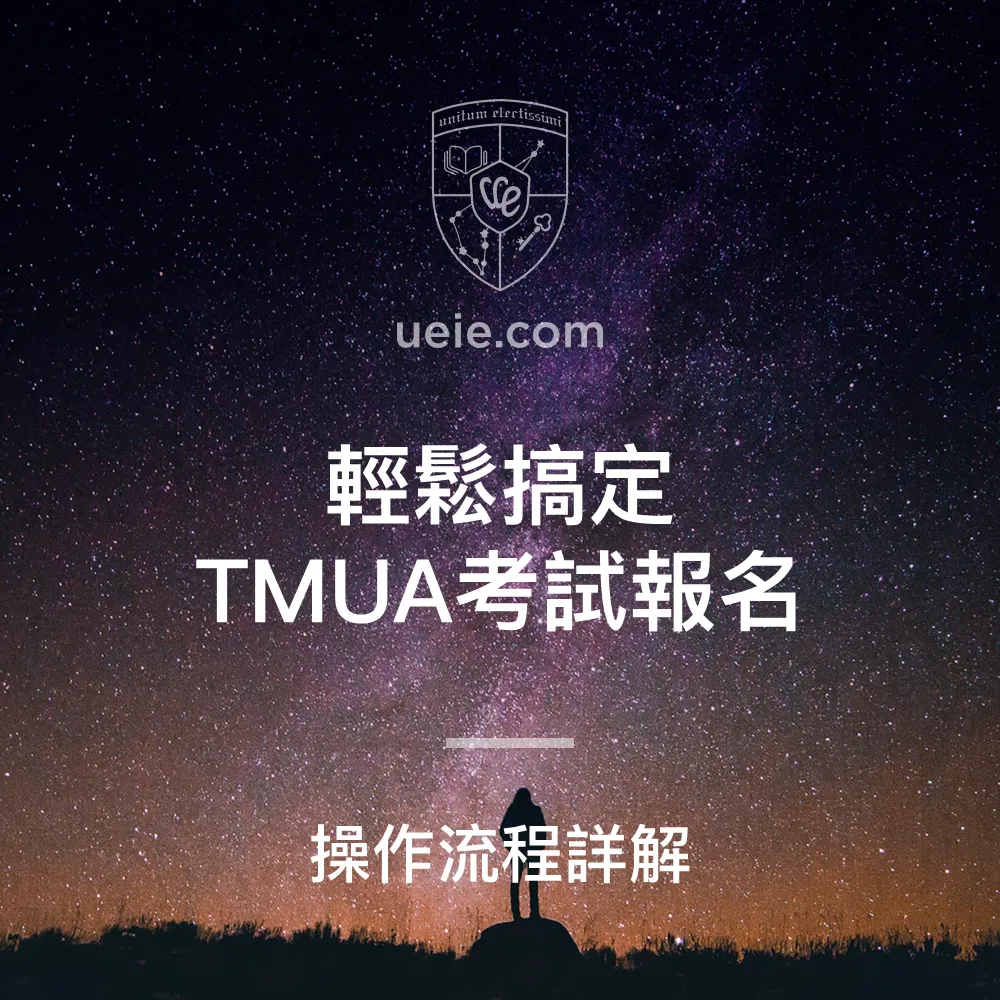
TMUA考試報名指南
九、TMUA 核心備試思路與資源推薦
掌握了 TMUA 的基本資訊後,如何著手備試?我先簡述備試的核心思路,再推薦相關資源。
1. 核心備試思路
鑑於 TMUA 主要考察數學知識的熟練應用、數學推理的敏捷性與準確性,並且有嚴格的時間限制(詳見本文第七部分),其備試策略應側重於:
- 知識層面:必須對考綱要求的 AS 數學及相關 GCSE 內容達到高度熟練,做到知識點信手拈來,反應迅速。
- 技能層面:重點訓練和提升運算速度與精度(無計算器環境)、邏輯判斷的敏捷性、以及應對選擇題(特別是辨識干擾項)的策略與技巧。
- 練習層面:進行大量、有針對性的限時練習是必不可少的,目的是適應考試節奏,將知識和技能轉化為在壓力下的穩定發揮。
以上只是備試 TMUA 的核心方向。關於如何系統規劃備試、分階段實施學習、運用具體的訓練方法(如錯題分析、時間管理技巧)、提升特定能力等詳盡的策略和步驟,請務必閱讀我專門撰寫的:《 TMUA 備試指南》
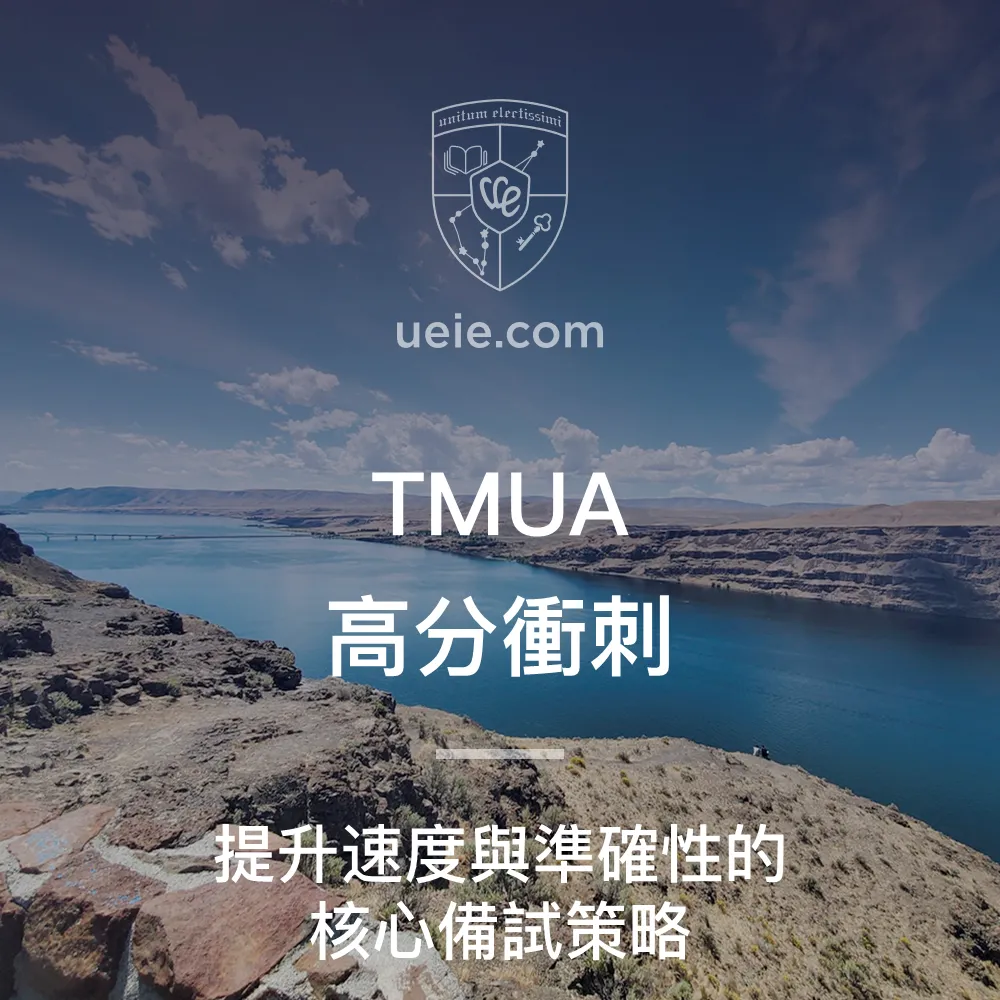
TMUA高分衝刺:提升速度與準確性的核心備試策略
2. 官方核心資源
你可以在 UAT-UK 官網獲取最權威資訊的核心渠道,包括:
- 最新版 TMUA 考試大綱
- 官方樣題與練習材料
- 考試指南與常見問題解答
- 歷年真題( 2016-2024 年)
3. UEIE TMUA 課程與資料
為了提升 TMUA 備試效率和效果,我(謝濤老師)基於多年筆試教學經驗研發了一套詳實的 TMUA 備試系列資料。這套資料包括精講視頻、配套 PDF 教材、線上練習題集、全真模考題等。我每年都會修訂更新這些資料,確保緊跟最新考試趨勢和要求。
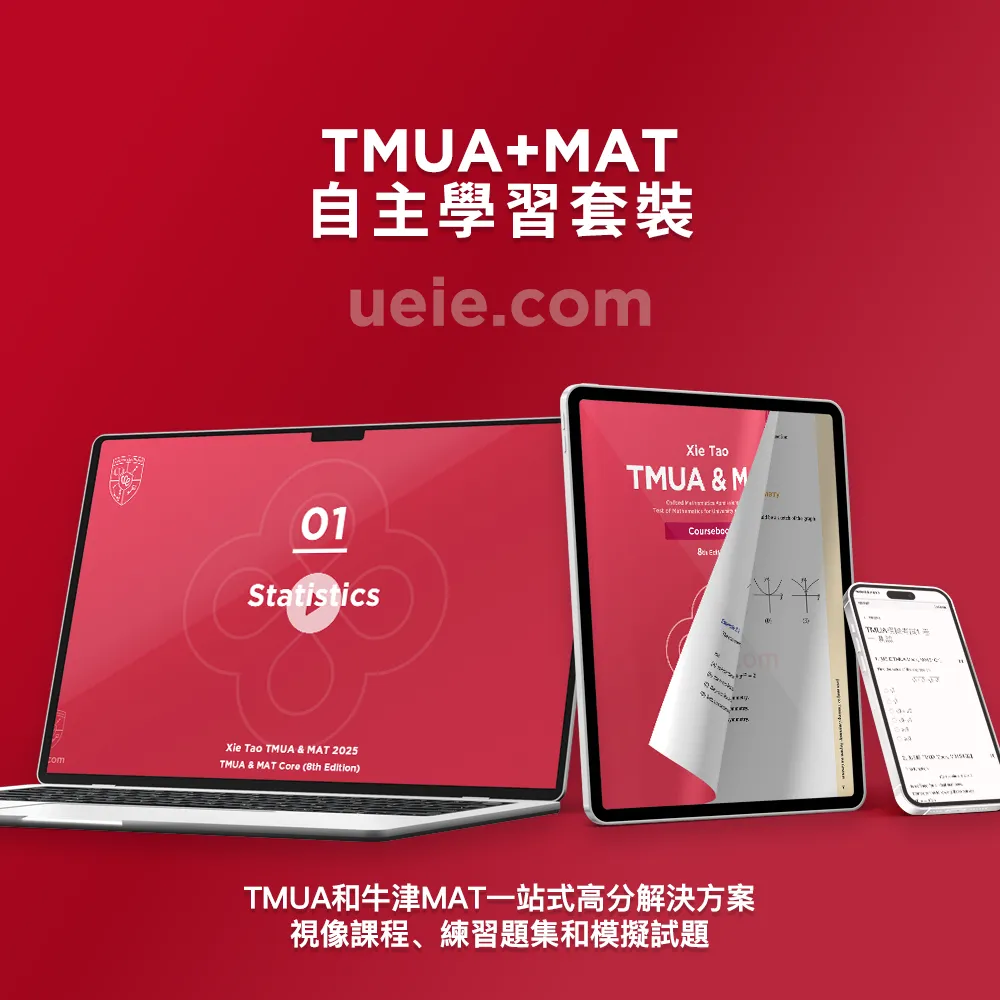
TMUA+MAT自主學習套裝
US$1 276 – US$1 844價格範圍:US$1 276 到 US$1 844
此外,我還與多所國際學校合作開展TMUA備試班課,感興趣的學生和家長可以透過以下連結了解相關課程和資料詳情。
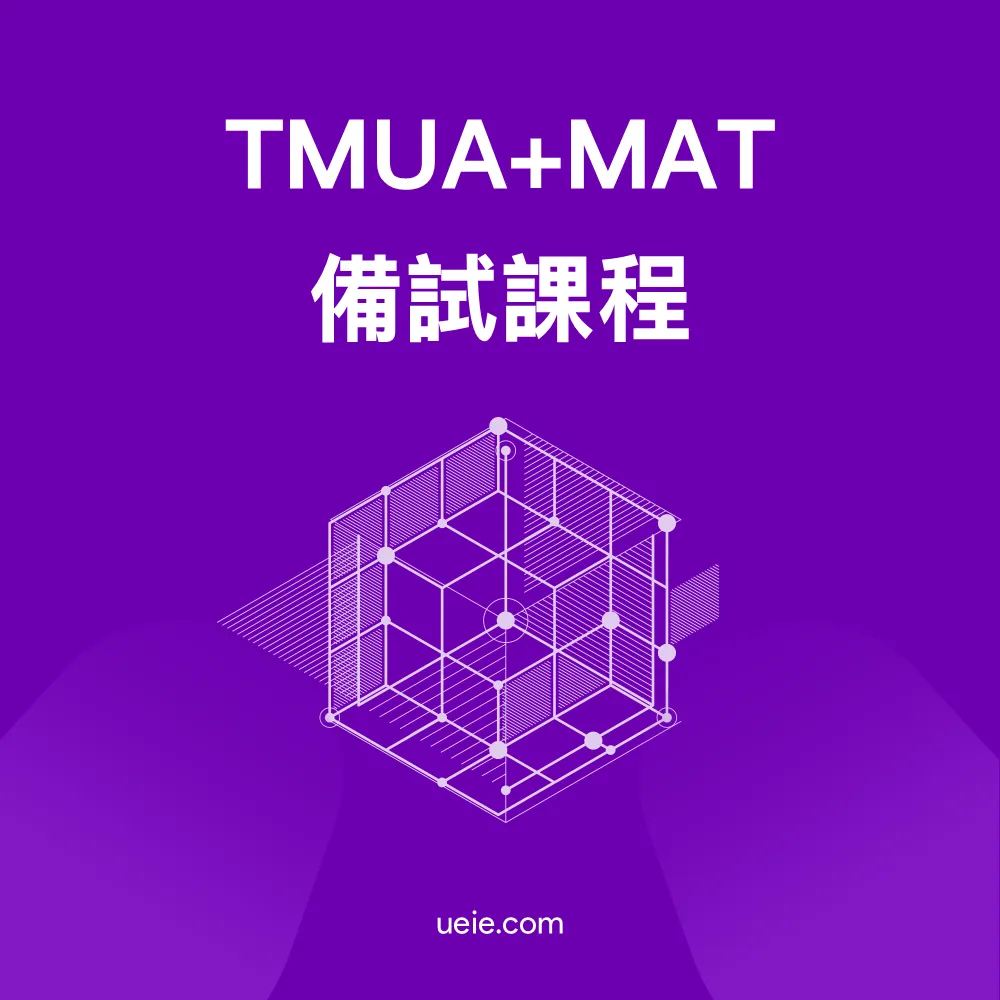
TMUA+MAT備試課程
US$3 096 – US$12 753價格範圍:US$3 096 到 US$12 753
4. 其他輔助資源
- 相關數學資源網站:如 MEI (Mathematics Education Innovation) 等網站提供的與 AS/GCSE 數學相關的練習題和資源。
- 問題解決類書籍:部分側重於提升數學思維、解題速度和準確性的書籍。
- 線上社群與論壇:如 The Student Room (TSR) 等平台可能有經驗分享,但請注意批判性地看待資訊。
5. 資源使用建議
- 官方為本:以 UAT-UK 官方大綱和樣題 / 真題為核心。
- 有的放矢:根據備試階段和自身薄弱環節,選擇性使用輔助資源。
- 精選高效:資源在精不在多,避免資訊過載。
- 主動學習:任何資源都要主動思考、深度複盤、總結歸納。
十、下一步行動建議
讀完這篇《 TMUA 全面解讀》,你應該對這項考試的關鍵資訊有了清晰的掌握。為了將理解轉化為有效的申請準備,我們建議你立即採取以下行動:
1. 核實官方要求
立刻訪問你目標大學及專業的官方招生網站,仔細確認其針對 2026 年入學的最新、最準確的入學要求,特別是關於 TMUA (或其他筆試)的具體規定、成績參考及替代方案。
2. 規劃考試報名
詳細閱讀《 TMUA 報名指南》,全面了解報名流程、所需材料、時間節點和考點選擇。 牢記報名截止日期,務必在規定時間內完成註冊和預約。
3. 制定備試計劃
深入學習《 TMUA 備試指南》,結合本文第七部分的難度分析和第九部分的備試思路,制定一份符合自身情況、詳盡可行的備試計劃。 盡早啟動備試,特別是對於需要大幅提升速度和熟練度的同學。
4. 精選備試資源
下載並研究 UAT-UK 官網最新的 TMUA 考試大綱及官方樣題 / 真題。 根據備試計劃,選擇性地利用高品質的輔助資源,例如 UEIE TMUA 備試站頁面提供的備考課程與資料,進行系統學習和針對性訓練。
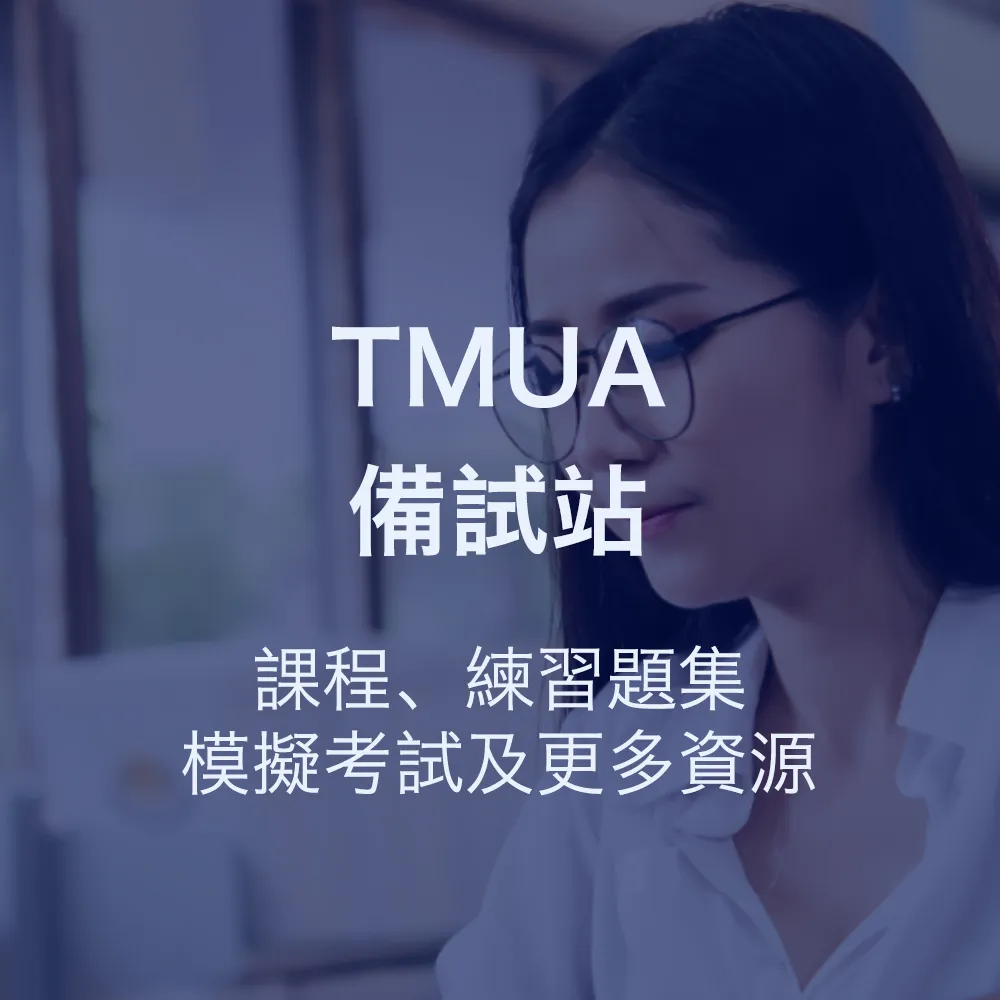
TMUA備試站
最後,充分的準備和積極的心態是應對 TMUA 挑戰的關鍵。祝你備試順利,申請成功,最終獲得心儀大學的錄取!




